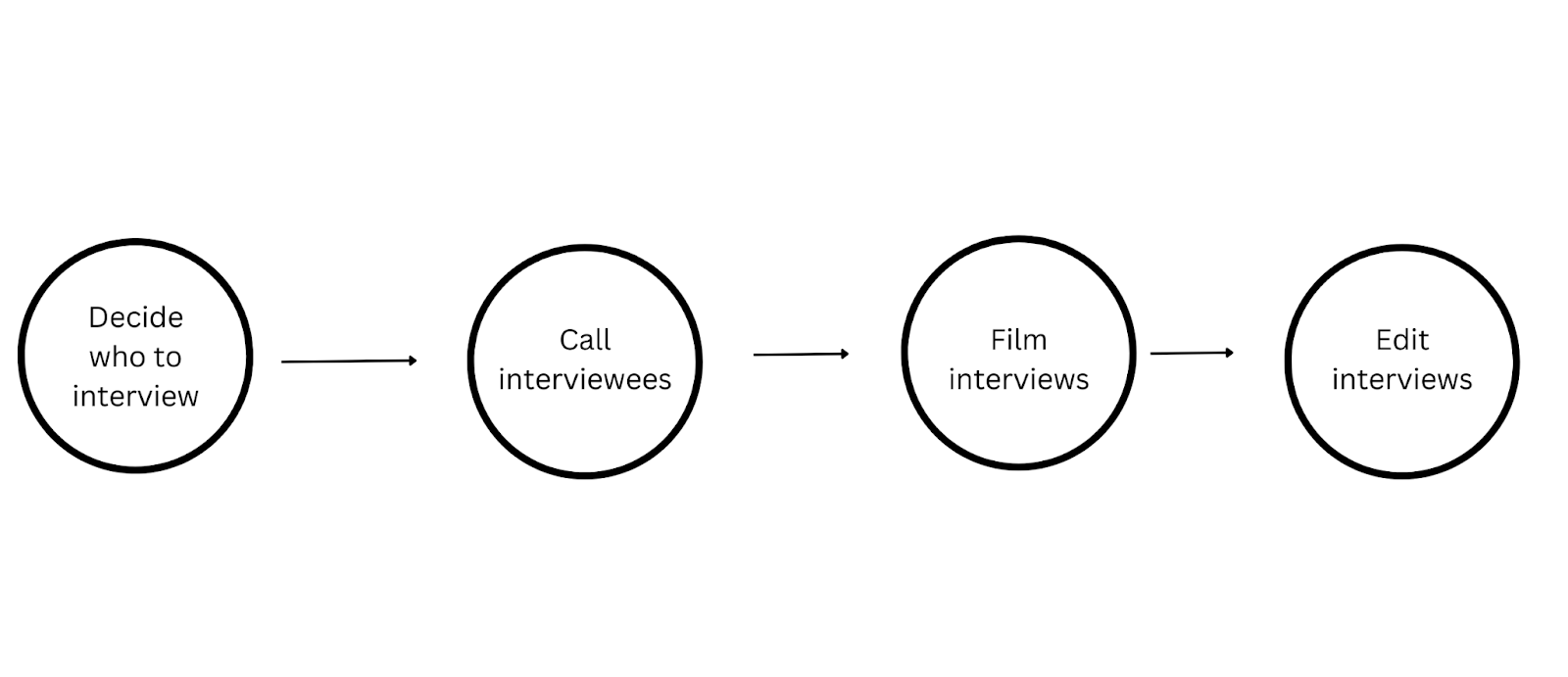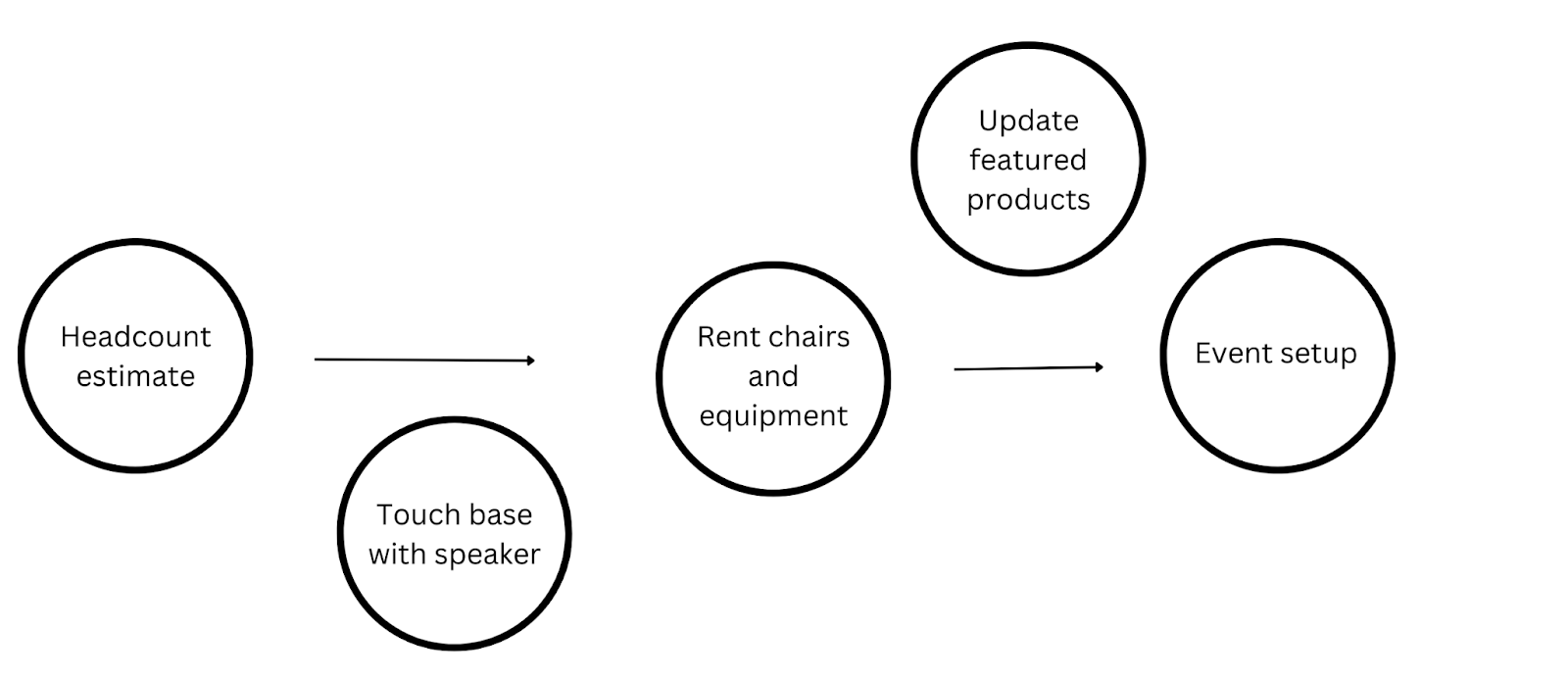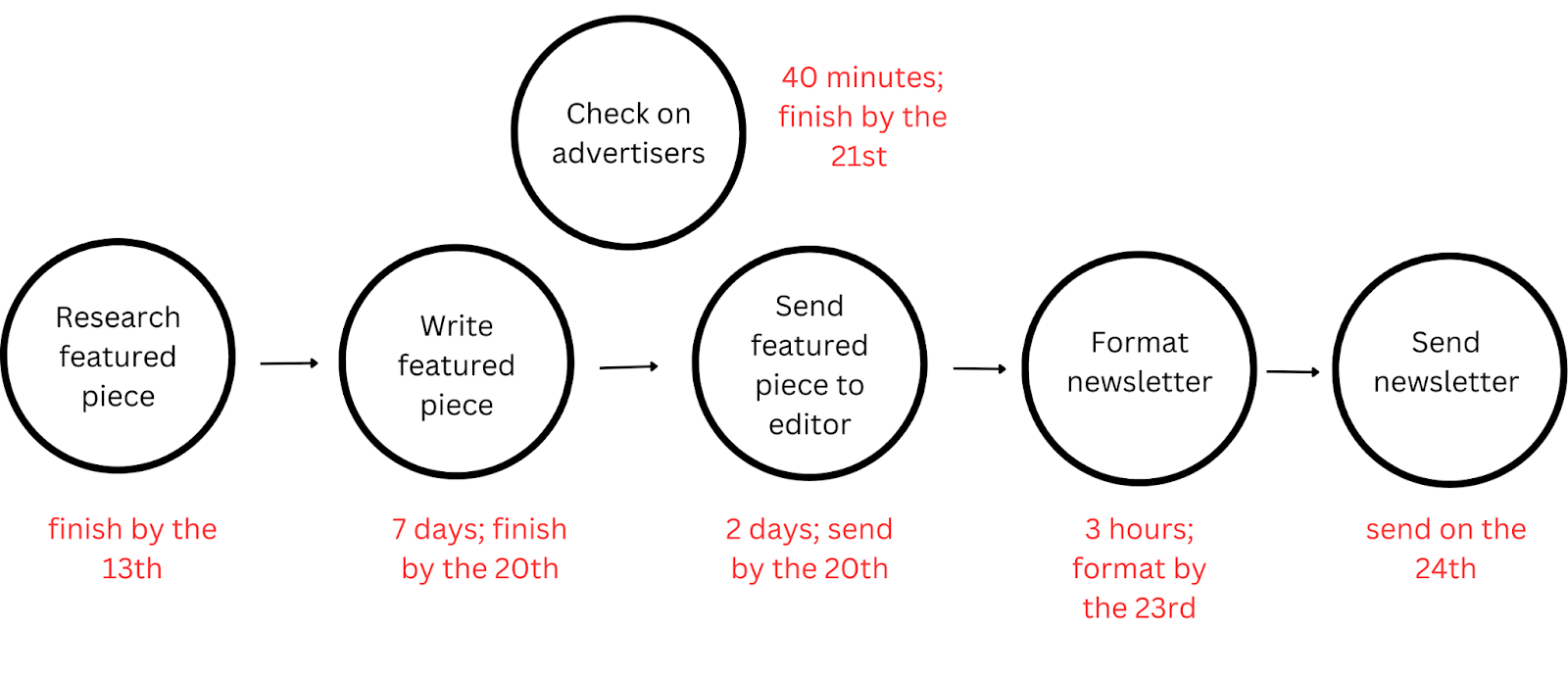CPM: What Is a Critical Path In Project Management and How to Use It
BySilver Stephens
Freelance Writer, Editor, and Social Media Manager

Freelance Writer, Editor, and Social Media Manager
The critical path method, or CPM, is an organizational technique used in project management. CPM works by breaking down your project into smaller tasks, figuring out which tasks are dependent on each other, and developing a timeline for the project based on how long each task takes.
The longest chain of tasks that must happen sequentially is your critical path. From there, you can determine how long a project will take.
Like any organizational tool, the critical path method, or CPM, works to optimize project and task management. The goal of CPM and the critical path formula is to give you realistic deadlines for your project and help you keep track of everything that needs to be done.
Research shows that CPM is an effective method of managing projects across industries and project sizes. Good management is what takes projects of any size from start to finish, and having tools like CPM keeps everything running smoothly.
No matter what projects are on your to-do list, the critical path method can break down the process in a way that’s visually easy to intuit and keep you on track throughout the project. When you use the critical path method, you can accomplish the following:
Keep track of all your project’s moving parts.
Figure out realistic deadlines.
Streamline internal communication and communication across teams.
Prioritize tasks and subtasks with efficiency.
Be proactive about potential delays in a project.
The critical path method is an intuitive formula that’s just a few steps more involved than a standard to-do list.
Step 1: List all your tasks. Make a note of every task that needs to be done for the project to come to fruition.
Step 2: Put tasks in order. From the beginning of the project to the end, put your tasks in order. Group tasks that depend on other tasks into a task chain: For example, you must make a shopping list before shopping, and you cannot serve food until you go shopping.
Step 3: Find your longest task chain—this is your critical path. Usually, one task chain is central to the project’s movement.
Step 4: Determine how long each task will take. The timing of your critical path will guide you toward your deadline, but make sure you count your floating tasks as well. When you figure out your timing, you can see which tasks can be done on the same day and use that as your deadline guide.
Project management is sometimes no easy task, especially when many factors depend on a specific sequence of events. This complexity is where the critical path method comes in. Here’s how to leverage the CPM for your projects.
Make a list of everything necessary for the project to be complete. Leveraging an effective to-do list can assist in getting down everything that needs to get done.
Which tasks depend on other tasks’ completion first? Prioritizing tasks is one of the most important steps of the CPM.
Your longest task chain is your critical path, so look at this part closely when dealing with the timing of the next step. Items in the critical path should be considered the highest priority.
Once you’ve put your tasks in order and put them in appropriate task chains, calculate how long each task will take. This step is crucial for getting the most out of the CPM, as it will guide you to realistic deadlines.
When setting those deadlines, give yourself extra time to account for variables like technical difficulties, business hours, and potential unforeseen circumstances.
Seeing your plan in a diagram layout will give you a visual understanding of the moving parts of your project. A diagram will let you quickly see where your priorities should be at any point during the project’s duration.
Once you’ve finished your diagram, you can send it to your team and anyone else collaborating so everyone knows what to prioritize.
Anyone can leverage CPM in both big project contexts and smaller everyday contexts. Let’s look at some examples to see how the critical path method can work for you.
Let’s say you’re a marketing team lead and want to do a video campaign featuring interviews with people prominent in your industry. Maybe your big-picture task list looks like this:
Decide who to interview
Call interviewees to set up dates and times
Film interviews
Edit interviews into video content for the website
This is an example of a straightforward critical path without any floater activities, as almost every single task depends on another task happening first. You can see the clear path in the flow chart here:
If deciding who to interview takes an hour, calling everyone can be done on the same day, filming takes five days, and editing takes two days, you know this project will take eight days, and you can set your deadline accordingly.
For our next example, let’s say you manage a bookstore and you’re planning a guest speaker event. Your task list includes:
Chairs and equipment rental
Getting a headcount estimate via social media
Setting everything up for the event
Making sure featured products are up-to-date
Touching base with guest speaker to see if they need anything
When you’re analyzing your critical path, your diagram may look like this:
Touching base with the speaker and updating featured products aren’t dependent on other tasks happening, so they’re considered floaters that can happen anytime between getting an estimated headcount and setting up the event.
You may be wondering if you can still work with CPM if you know your deadline ahead of time, and the answer is yes. For example, if you’re in charge of an online newsletter that must go out monthly on the 24th, you can work backward with CPM and see when tasks need to be finished by. Maybe your tasks are:
Check on advertisers
Research the featured piece
Write the featured piece
Get the featured piece edited
Format the newsletter layout
Send the newsletter to the email list
This list is already in CPM order, and checking on newsletter advertisers is a floater activity. You need to know which ads are going in for formatting, but your critical path isn’t affected if you do that activity towards the beginning or the end of the process.
Now, if you know the newsletter is going out first thing in the morning on the 24th, you’ll want everything formatted by the 23rd. If you’re sending your piece to an editor who usually takes two days, you’ll want to send it by the 20th, and so on.
If you have a floater activity, like checking on advertisers, it’s good to set a deadline to keep yourself organized. In this example, if you need advertising information for formatting on the 23rd, you’ll want to make those phone calls no later than the 21st. That way, if someone’s out for the day, you’ll still have time to get information from them.
We’ve broken down the timing in the following chart:
If there are variables, you can account for them in your time breakdown to give yourself extra padding and ensure you reach your deadline.
Like any organizational tool, CPM suits some thinking styles more than others. There are benefits to using the critical path method, though, listed below.
CPM keeps your team on the same page about priorities and streamlines communication about project status updates and other tedium. This results in more effective time management.
Critical path analysis makes finding appropriate deadlines intuitive and less overwhelming. If you have deadlines you must meet, CPM helps you work backward and see how fast everything must get done to stay on track.
CPM ensures that tasks don’t fall through the cracks by considering every item. While the critical path is the central focus of CPM, there is still built-in space for middle and lower-priority tasks.
Analyzing your critical path enables you to anticipate potential delays in your project. Planning for these potential roadblocks will keep you and your team from being stressed.
CPM diagrams make prioritizing simple. Diagrams keep your team and outside collaborators on task and dedicated to the most important aspects of the project.
If you’re a project manager, you’re likely always trying to find the most efficient way of getting things done. Here’s how the critical path method stacks up against PERT and Gantt Charts.
Program Evaluation Review Technique, or PERT, is a visual organizational method similar to CPM.
PERT charts account for many variables, like the shortest vs. longest possible timelines, slack time, and other potential irregularities. While this can be good for projects with many variables, PERT charts tend to be more complex to follow than CPM diagrams, though PERT can incorporate CPM.
This layer of complexity can confuse team members at a glance, making it harder for them to know where to put their time. Since CPM diagrams are more streamlined, priorities may be clearer.
Gantt Charts focus more on calendar time versus the completion of a sequence of tasks, which can have advantages and drawbacks. Gantt Charts can take resources and completed tasks into account, whereas CPM diagrams offer a more minimalist view that focuses on the tasks at hand.
This is another instance in which complexity can slow team members down. Gantt Charts’ ability to consider many variables means it can be more difficult to create. Gantt Charts mitigate their complexity by incorporating an easy-to-follow task chart where team members can see priorities at a glance.
CPM management solutions can work for any office, but the right software is essential for remote employees. When you have a remote team, it can be more difficult to have project check-in meetings than if your office is in-person.
With software like Workast, you can manage your critical path, delegate tasks accordingly, and have a visual representation of your project that anyone on your team can access. When everyone understands task priority and deadlines, you set your team up for success.
The critical path method is a handy way to find the most important tasks in your project, develop realistic deadlines, and keep your team in the loop about project progress. Resources like Workast enable you to create a critical path of your own and assist in optimizing project management, no matter what industry your business is in.


